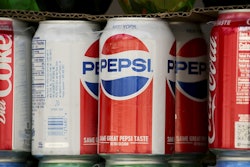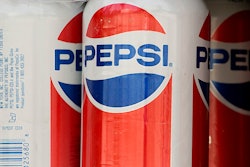Sourcing the Data
a Critical Challenge
TRACEABILITY
A Radley Corporation White Paper
Table of ConTenTs
Sourcing the Data — a Critical Challenge ........................................................... 1
Determining Your Data Needs .............................................................................. 1
Structuring the Data .............................................................................................. 4
Collecting the Data ................................................................................................ 5
Solution Architecture Considerations ................................................................. 6
ERP or Other Multi-purpose Business Management Software ................................... 6
Stand-alone Traceability Solution .......................................................................... 6
Hybrid Solution .................................................................................................... 7
Conclusion ............................................................................................................. 7
TRACEABILITY
Sourcing the Data
— a Critical Challenge
I It’s no secret that more and more companies across multiple industries are being chal-lenged by the need to track and completely
trace products they produce or materials they
handle. Driven by the FDA and regulations
such as FSMA (Food safety Modernization Act)
and HACCP in the food and beverage industry,
hazardous material requirements driven by the
EPA and DOT, worker safety driven by OSHA,
automotive safety requirements from NHTSA,
HIBC for healthcare, etc., organizations are un-
der constant pressure to adapt and keep up.
Identifying what data attributes are required to
be compliant is tough enough, but added to that
challenge is being able to determine where,
when and how often the data is collected and
how granular it needs to be.
Business solutions, including traceability sys-
tems need timely and accurate data to be mean-
ingful and responsive. These solutions utilize
modern BI (business intelligence) reporting tools
and dashboards to provide a historical view of
data and the ability to quickly and perform que-
ries. These tools also help visualize normal day
to day operations. More importantly, they help
to highlight exception events which trigger im-
mediate notification and predetermined courses
of action when exceptions occur. But if the core
data is not current, is missing or worse, is in-
accurate the value of the solution is diminished
and non-compliant situations or breaks in the
traceability chain can occur.
Determining Your Data Needs
“...understand the minimum data needed
to be compliant to regulations driving your requirements.”
A good place to start when determining what
data you need is to understand the minimum
to be compliant to regulations driving your
requirements. The identification and collection
of this data alone can be a difficult task. It may
require gathering traceability record data from
suppliers on incoming materials and appending
that to the beginning of your internal traceability
c u s t o d y
r e c o r d .
Transportation
data may be
needed such
as trailer
temperature,
transit time, product condition, container
information, etc. Certainly there will be a need
for incoming lot and or serial number details,
Page 2
production dates, expiration dates and other
basic information. Once the traceability record
begins within the enterprise; the type of the
product or material being produced, the critical
nature of the supplies being utilized and the
processes they go through will help determine
the granularity of the data required for traceability
purposes. You should also consider other
data you could collect to both further mitigate
quality concerns and enhance response time, in
addition to more data about operations that can
be used to better measure performance and
improve efficiencies.
Take a Two-dimensional View
One way to begin outlining your internal trace-
ability record requirements is to take a two di-
mensional view of your organization. Start with
the output side of your processes. Select one of
your finished products and determine what data
attributes would be required in order to track it
back through all its inputs if there were quali-
ty issues. The inputs would include all of the
supplies, raw materials or ingredients (by lot or
serial number at a minimum), each process or
operation such as measuring, weighing, mixing,
heating, cooling, drying, aging, etc. Also includ-
ed would be each piece of equipment or ma-
chinery, even specific tooling that was used to
produce that particular product. QA benchmark
points such as each worker that that handled the
product, each location and duration of storage,
even if temporary and any packaging or repack-
aging. This type of analysis will need to be done
for all of your products that require traceability.
The next view is from the raw material or supply
side of your processes. Evaluate your suppliers,
as each raw material or ingredient input needs
to be reviewed to determine the level of risk it
represents for potential quality issues. This may
mean a more in-depth review of the supplier(s)
of this material or ingredient to determine if their
traceability processes and attribute granulari-
ty meets your needs. Critical suppliers should
be able to provide a traceability record by lot or
serial number with the appropriate associated
data attributes such as production dates, best
by dates, mill numbers, etc. that your organiza-
tion can append to or be made part of your own
ongoing traceability record; that you can also
pass on to your customers or partners.
Look forward through all of the processes that
ingredients, materials or supplies may poten-
tially go through to create products or sub-prod-
ucts. While similar to the view from a finished
product back through the processes to identi-
Page 3
fy traceability data attributes, there are some
significant nuances. What you are looking to
identify here are all the possible end products a
given supply or ingredient may be used in and
how many possible routes it may take through
various production lines or processes including
machinery, automated equipment and handling
points. Perhaps a portion of a raw material lot is
taken and mixed with other partial material lots
to create a sub product or sub component. This
sub product becomes its own lot (or serial num-
ber) and then goes back into the supply invento-
ry to be partially consumed as needed for other
finished product production or maybe even more
sub products depending upon the complexity
and diversity of your products. Armed with this
Page 4
information you now can begin to get an idea of
not only what data you need and how often you
need it, but where to collect it. If you are running
a modern ERP system, much of this information
may be right at your fingertips. Many of these
process transaction points were likely identified
during the solution mapping phase of your ERP
implementation. You have a great start, as you
are most likely capturing at least some of the-
needed attributes for your traceability record.
Structuring the Data
A significant impact on the type and volume
of data required is the application, or system
of record that will store the traceability record.
Many organizations have implemented a trace-
ability solution or process ERP system only to
find they need to hire or redirect staff for manual
data entry into these systems in order to meet
ongoing transactional data requirements driven
by the solution. Implement-
ing barcode scanners and
label printers (or RFID tags
and interrogators) to scan/
read the data automatically
into the target application is a
good first step. But if it isn’t
implemented efficiently, it
may not be enough to source
all of the data attributes
required for compliance pur-
poses in addition to the ongo-
ing transactional data needed
for the application. In fact, it
may mean more scanning and
printing hardware, more floor level workflows
and scan points than needed and therefore
more workers scanning than is necessary. This
is where a well thought out data structure design
can significantly increase efficiency and reduce
the number of scans (or reads) required to col-
lect the data that your analysis has determined
is needed.
A flexible, dynamic data structure that maintains
unlimited levels of parent/child relationships,
including status and history should be part of
any solution you choose to implement. It should
include the ability to add unlimited data attributes
at any point in the process without being con-
strained by database schema. This is important
as it significantly limits the amount of customiza-
tion to the solution to accommo-
date changing data attribute
requirements. A label (or tag)
serial number often called a
“license plate” can be created
for an individual item and all
associated attributes at any
point in your process such as
lot, container, bin, tote, rack,
etc.
When the label is created, the
attributes are assigned to that
label in the database. Com-
bined with automated data
collection, a single scan of the
“license plate” will update your system(s) with
the transaction performed as well as the data of
T R A C E A B I L I T Y
CONTAINER
“Many organizations have
implemented a traceability
solution or process ERP system
only to find they need to hire or
redirect staff for data entry into
these systems to meet ongoing
transactional data requirements
driven by the solution.“
Page 5
the master container (parent), the data of all sub
containers (child), all of the associated items
within any sub containers and all of the data
attributes of each master, child, items, lots etc.
It is critical that a history is maintained which
logs any changes to a license plate as items or
sub containers are added to or removed from
master containers. This type of a data structure
can significantly reduce the amount of work-
flows, scan points and scans required to collect
the traceability data you need.
Collecting the Data
The collection of your data is another important
consideration for your traceability requirements
and your overall operational needs as well. Data
needs to be collected and validated real-time as
events occur and materials move through your
processes. The value of your data is directly
related to its freshness. The older it is when it
is collected, the less meaningful it is to decision
making and the less responsive an organization
will be to exceptions in their processes. Com-
prehensive traceability data can be derived from
many different sources within an organization.
Most commonly, bar code labels are used to
grab basic data about materials as they move
through the facility. These are much more effi-
cient when used with a data structure similar to
that described previously. Just about anything
can be barcoded with today’s rugged labels,
adhesives and diverse scanning technology.
RFID is a great technology to supplement bar
codes under the right circumstances, but physi-
cal limitations of the technology make RFID-only
solutions very challenging and potentially much
more costly especially in process environments.
Integrating your traceability solution to net-
worked equipment and other existing data-
bases is a great way to supplement your data
while also reducing the labor needed to collect
it. Communicating with PLC’s (programmable
logic controllers) that front end machinery is
very common and you may already be doing
it for other purposes. OPC (object linking and
embedding for process control) is a standard
that has greatly simplified the process of com-
municating with PLC enabled equipment. One
of the most common integrations in a process
environment is scale or measuring equipment
communications. The precise weight or volume
of ingredients and the history of those processes
can be critical for your traceability record.
Some of the traceability data you need may
already be available in a solution database used
for other purposes such as QA, asset mainte-
nance, machine monitoring and OEE, produc-
tion reporting, etc. Merging this data or the
specific subset needed for traceability to the
traceability record should be part of your solu-
tion. Another option is to integrate the collection
of data for other systems into your traceability
process. This allows multiple systems to be
updated from a single scan point or workflow
resulting in greater labor efficiencies.
Comprehensive traceability
data can be derived from
many different sources
within an organization.
Page 6
Solution Architecture
Considerations
There are many options when it comes to select-
ing a solution to help meet your traceability needs.
The size of your organization will help drive your
solution architecture requirements as it relates
to functionality breadth and budget. You may
already have a system in place such as an ERP,
that can help get you get started. Here are a few
basic architecture options:
ERP or Other Multi-purpose Business
Management Software
This type of solution is usually a suite of inte-
grated applications on a common database that is
implemented across functional areas of the enter-
prise. Large, multi-location organizations almost
always have a solution of this type. Versions
of these solutions developed for process based
manufacturers tend to have a good basis to sup-
port traceability requirements with at least some
of the functionality described above. Most ERP
type solutions support lot and serial tracking and
for many users this is enough for basic traceabil-
ity. However, for those faced with more complex
data attribute tracking requirements it most often
means customizing the ERP system, database
and data collection network for the initial require-
ments. This customization effort and cost contin-
ues to grow for any additional requirements that
come up as new customers, products or market
segments are added to the mix and are magnified
during software version upgrades.
Stand-alone Traceability Solution
A pure traceability solution that helps organize
the data with a flexible parent/child relationship
structures. This type of solution should have
features such as license plating and or contain-
erization to support aggregation and organiza-
tion of data to reduce the amount of labor work-
flows or scan points and material flows through
the various internal material utilization processes.
Another key capability of this type of solution is
the ability dynamically configure or add an unlim-
ited amount of various data attribute types that
can be collected and maintained to support the
requirements. The traceability solution should
provide reporting tools and dashboards to monitor
performance. A critical component of the solution
is alert/notification capabilities whereby operators
or management are alerted real-time to exception
events or conditions. A stand-alone solution will
inherently have the ability to collect data via bar
code or RFID technology, as well as the ability to
pull data from machinery, cooking/mixing equip-
ment, scales, sensor networks, etc. These types
of solutions are usually used by small to mid-size
companies.
Hybrid Solution
This involves front ending an ERP or multi-pur-
pose business system with a complimentary trace-
ability/data collection solution. A hybrid solution
combines the inherent features of both systems
with the added benefit of combining disparate
A critical component
of the solution is alert/
notification capabilities
whereby operators or
management are alerted
real-time to exception
events or conditions.
Page 7
transactional workflows to allow additional data
to be collected at a single scan point; usually a
transactional milestone in the ERP system or a
product handling point. From each scan point
the solution then updates the ERP record, the
traceability record and any other business sys-
tems if necessary. The combined solution also
runs on the same database to ease reporting for
BI purposes.
Conclusion
Your organizations industry, customer require-
ments, products, processes and systems will
drive your data requirements. A well designed
solution will help you be flexible with how you
collect it, where you collect it, how the data will
be structured and how it will be integrated to your
various other systems. It provides you a means
to trace your products or sub products either
forward or backwards from any point in your
process and will allow you to share your trace-
ability record with your customers and partners.
Developing a well thought out and strategic
traceability plan vs. reacting to specific require-
ments tactically as they arise will allow you to
build a more dynamic and sustainable business
system. This approach will enable your orga-
nization to minimize problem impact, enhance
your ability to simulate as well as accommo-
date market segment growth and diversification
while mitigating risk with the added benefit of a
much lower long term cost of ownership. `
4595 Broadmoor SE, Grand Rapids, MI 49518
Tel. 641-554-6010 www.radley.com
©2014 Radley Corporation. All rights reserved.
© 2014 Radley Corporation. All rights reserved.
Traceability: Sourcing the Data a Critical Challenge
It’s no secret that more and more companies are being challenged to meet compliance regulations put forward by organizations like the FDA, EPA DOT, OSHA, NHTSA and HIBC. The constant pressure to keep up and adapt to current tracking and traceability standards can be overwhelming. New solutions such as traceability systems utilize modern business intelligence reporting tools to help simplify the process.
Latest in Home
ABB to Invest $110 Million in 4 U.S. Plants
September 17, 2025
Nvidia CEO Huang Says He's Disappointed by China Chip Curbs
September 17, 2025






















